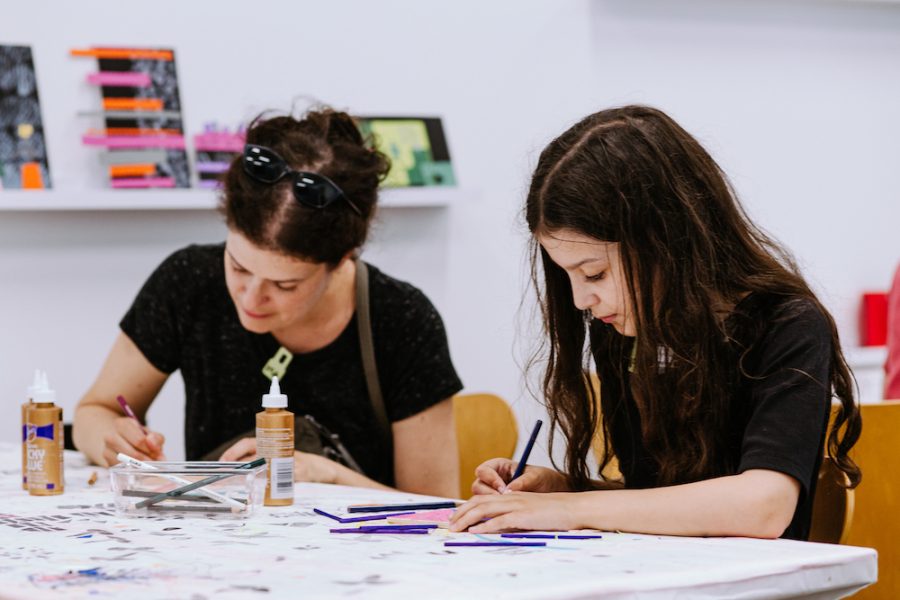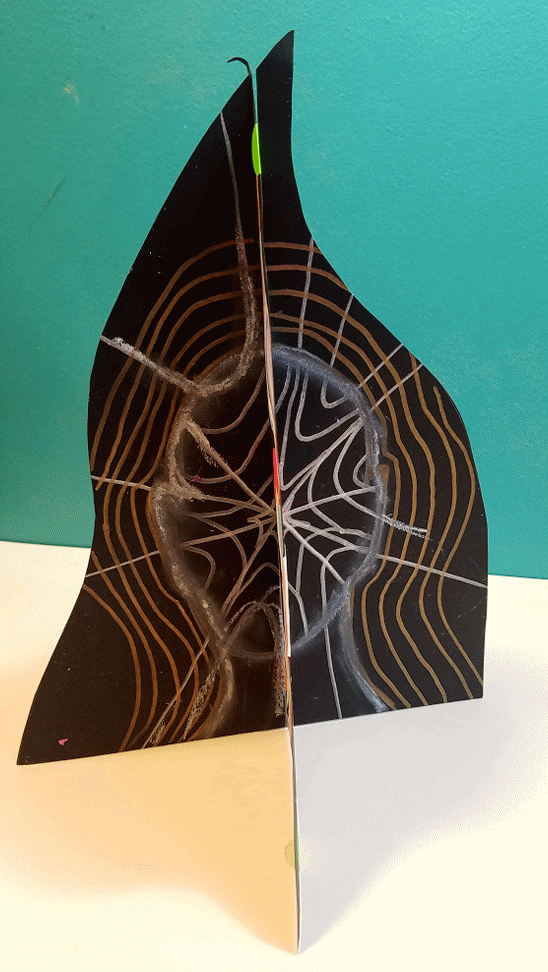
Photo by Natasha Moustache
Great for individuals, groups, and families of all ages to work on together at home!
The average museum visitor spends less than twenty seconds looking at any given work of art. Now in its tenth year, Slow Art Day asks museum and gallery visitors around the world to take a pause and spend more time engaging with art. While social distancing keeps us from celebrating Slow Art Day together in the ICA galleries, we invite you to try Slow Art Day from home.
You’ll need an artwork to focus on, some paper, a writing utensil, and a time keeping device.
|
1 Choose an artwork that you’d like to spend some time with. Choose from the walls or shelves in your home, illustrations or photographs in books, or artwork from the ICA collection. Stuck on choosing an artwork? We recommend Caitlin Keogh’s Blank Melody, Old Wall (2018) for its vivid symbolism. Scroll down for other suggested artwork.
|
|
|
|
2 Close your eyes and take a deep, slow breath. |
|
3 Set your timer for thirty seconds. Spend this time looking closely at the artwork. Start in one corner and slowly move your eyes from side to side, up and down, and back and forth. |
|
|
4 After thirty seconds, look away from the artwork. Write down ten details you remember. |
|
|
5 Repeat steps 3 and 4, this time writing down ten new details. |
|
|
6 Return your attention to the artwork. Write down any additional details or observations that you might have missed. |
|
|
7 Set your timer for three minutes. On a fresh sheet of paper, try drawing what you see. If you’d like an extra challenge, try drawing while you keep your eyes on the artwork without looking down at your paper or lifting your writing utensil. |
|
|
8 Consider your personal interpretations of the artwork’s meaning. What’s it all about? Write your thoughts in stream of consciousness style.
|
|
|
9 What questions do you have about the artwork? Make a list. |
|
|
|
10 Close your eyes again. Imagine you are viewing the artwork in an alternative setting: a museum gallery, a vast field, or any other setting your imagination conjures up. |
|
11 Take a deep, slow breath and open your eyes. |
|
|
|
12 Conclude by reflecting on the slow looking process. How did it feel to look slowly? What did you like best about slow looking? What was challenging about this experience for you? How might slow looking translate to other areas of your life?
|
Share your Slow Art Day reflections with us on social media by using the hashtag #ICAartlab.
This activity was created by Amy Briggs Kemeza, Tour Programs Manager, in conjunction with the global Slow Art Day initiative.
This activity is adaptable for beginners to experts. Please note that this project involves using scissors to cut fabric and/or paper. Great for individuals, groups, and families to work on together at home!
Inspired by Merill Comeau and her current Art Lab installation Threads of Connection, we’re excited to continue our community quilt in this digital space. You’re invited to create your own quilt square that represents who you are. What makes you special? What do you love about your community? What are you proud of? What do you believe in? Submit your finished quilt square for the chance to be featured in our virtual quilt and help us build community while we’re all apart!
You will need:
Construction & material options:
 |
|
Step-by-step:
|
1. Make your background Create a square background with the materials available to you. The length and width of your background should be equal to make a perfect square. We’ve been working on a 6” x 6” square, but you’re welcome to work larger or smaller. 2. Cut & collage Collect your collage materials and brainstorm your design. Cutting custom shapes and using different colors and patterns can help visualize your ideas. Layering is encouraged! Will your design be representational or abstract? How will you cut your materials to make details and designs? How will you place cut pieces onto your background to convey your message? Get creative! There’s no wrong way to collage. 3. Finalize Once you have your design laid out, glue or tape down your collage materials to keep everything in place. If you don’t have glue or tape you can just lay out your design on a flat surface for taking your submission photo. If you’re inspired to use other materials, or maybe you’re an expert at other skills like sewing or embroidery, try incorporating them here. Try to keep your design within the edges of your square so we can connect your square next to others!
4. Take your submission photo! Because we’re all practicing social distancing, we’ll be displaying the community quilt digitally for everyone to view from home. Find a sunny spot or brightly lit place in your home or outside. Lay your quilt square on a flat surface that is a solid background and take a photo from above. |
5. Submit your photo Post your finished quilt square on social media with #ICAartlab or email it to FamilyPrograms@icaboston.org for a chance to be featured on our website! |
This activity was created by artist Merill Comeau and Brooke Scibelli, Family and Art Labs Program Coordinator.
Great for kids and adults to make together, ideal for ages 5+.
Make your own paper tentacles inspired by Yayoi Kusama’s LOVE IS CALLING. Explore themes of fear and love with your family, through mark-making and simple sculpture building. You’ll need 2 sheets of paper per tentacle, scissors, and some mark-making tools like a pencil, markers, or crayons. Oil pastels and black cardstock paper are used in the examples below.
1. Trace + Cut

Cut a slit halfway into each tentacle, one from the top and one from the bottom.

2. Assemble
 |
3. Decorate!
 |
 |
 |
 |
 |
 |
|
4. Optional finishings!
 |
 |
5. Share your creations!
Hooray! You’re all done. Post your work of art on social media (follow us on Instagram, Facebook, + Twitter) and tag #ICAartlab to share with us!
This activity was created by Brooke Scibelli, Family and Art Lab Programs Coordinator.